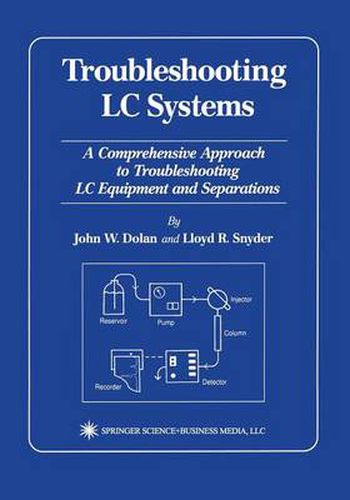Readings Newsletter
Become a Readings Member to make your shopping experience even easier.
Sign in or sign up for free!
You’re not far away from qualifying for FREE standard shipping within Australia
You’ve qualified for FREE standard shipping within Australia
The cart is loading…






This title is printed to order. This book may have been self-published. If so, we cannot guarantee the quality of the content. In the main most books will have gone through the editing process however some may not. We therefore suggest that you be aware of this before ordering this book. If in doubt check either the author or publisher’s details as we are unable to accept any returns unless they are faulty. Please contact us if you have any questions.
Over the last 15 years, high-performance liquid chromatogra phy (LC) has made the transition from an instrument used only by experts in research labs to a tool used for routine applications by relatively unskilled workers. With this transition have come in instrumentation and column technology. In major advances the past, the operator had to be a jack-of-all-trades, with a screw driver, soldering iron, and various wrenches as constant compan ions in the LC lab. Today, many instruments contain micropro cessors as powerful as those of mainframe computers of earlier days. With this technology has come a variety of self-diagnostic tools that allow the LC system to locate many of its own prob lems. Traditionally, well-honed LC troubleshooting skills have been a result of years of work at the bench. Today the LC system itself often can do a better job of troubleshooting than the operator can. Yet many of the problems of the past are still the major problems of today: air bubbles, check valves, detector lamps, and, of course, problems with the separation. An added pressure on the operator of today’s LC system is that of productivity-the lab often cannot afford unnecessary downtime. This means that the operator has to be a troubleshooting expert, or has to have that expertise at his or her fingertips. The present book was written to provide this expertise in an easy-to-use format for users at all levels of experience.
$9.00 standard shipping within Australia
FREE standard shipping within Australia for orders over $100.00
Express & International shipping calculated at checkout
This title is printed to order. This book may have been self-published. If so, we cannot guarantee the quality of the content. In the main most books will have gone through the editing process however some may not. We therefore suggest that you be aware of this before ordering this book. If in doubt check either the author or publisher’s details as we are unable to accept any returns unless they are faulty. Please contact us if you have any questions.
Over the last 15 years, high-performance liquid chromatogra phy (LC) has made the transition from an instrument used only by experts in research labs to a tool used for routine applications by relatively unskilled workers. With this transition have come in instrumentation and column technology. In major advances the past, the operator had to be a jack-of-all-trades, with a screw driver, soldering iron, and various wrenches as constant compan ions in the LC lab. Today, many instruments contain micropro cessors as powerful as those of mainframe computers of earlier days. With this technology has come a variety of self-diagnostic tools that allow the LC system to locate many of its own prob lems. Traditionally, well-honed LC troubleshooting skills have been a result of years of work at the bench. Today the LC system itself often can do a better job of troubleshooting than the operator can. Yet many of the problems of the past are still the major problems of today: air bubbles, check valves, detector lamps, and, of course, problems with the separation. An added pressure on the operator of today’s LC system is that of productivity-the lab often cannot afford unnecessary downtime. This means that the operator has to be a troubleshooting expert, or has to have that expertise at his or her fingertips. The present book was written to provide this expertise in an easy-to-use format for users at all levels of experience.